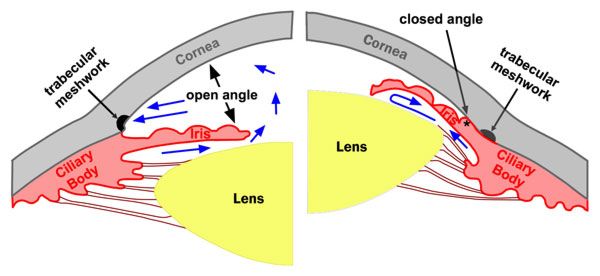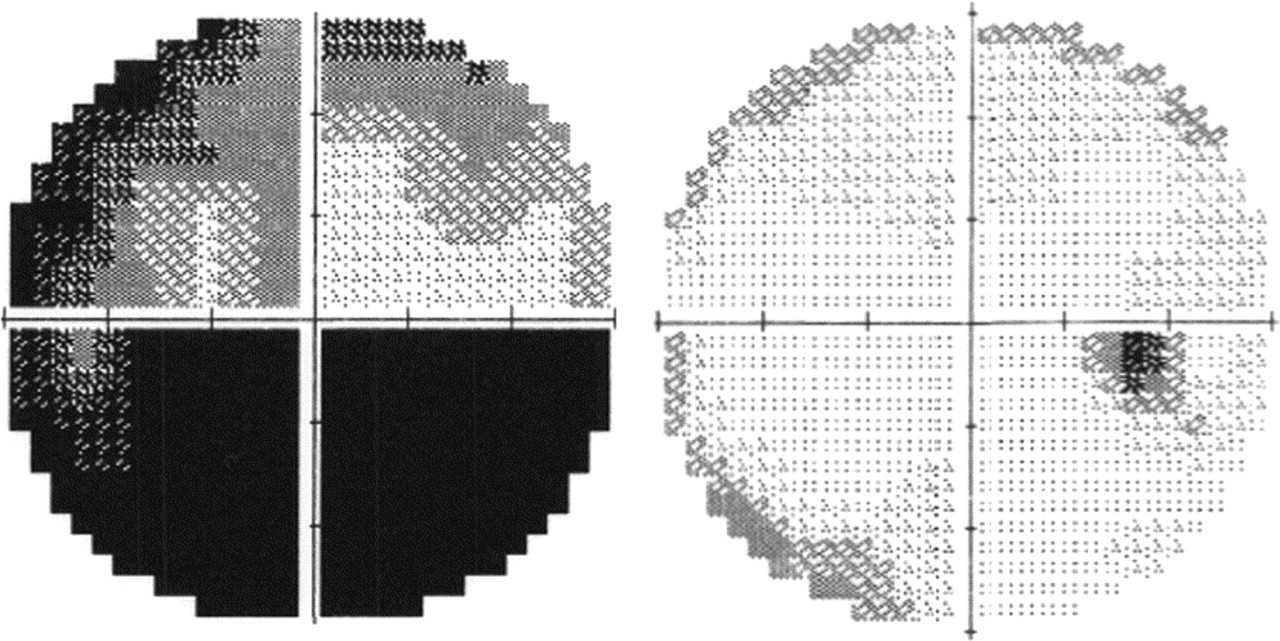Page Contents
WHAT IS IT?
Glaucoma refers an eye disease that causes damage to the optic nerve because of increased pressure in the eye (increased intraocular pressure). Open-angle glaucoma is a specific type of glaucoma where the pressure/aqueous fluid is built up IN FRONT OF the iris. It is not to be confused with closed-angle glaucoma (which is less common).

WHAT CAUSES IT?
Increased intraocular pressure IN FRONT OF the iris is ultimately the cause of this condition: it is thought that this occurs due to the blockage of the trabecular meshwork This blockage can be:
- White blood cells in inflammatory processes like uveitis
- Red blood cells in hemorrhagic processes such as vitreous hemorrhage
- Retinal elements such as in retinal detachment
WHY IS IT A PROBLEM?
This increased pressure within the eye will lead to optic disk atrophy, that is marked by cupping (thinning of the outer rim of the optic nerve head). The ultimate end result of this is progressive perisperhal visual field loss.

WHAT MAKES US SUSPECT IT?
Risk factors
Older age, African-American race, family history of glaucoma, Sturge-Weber syndrome,
Initial Presentation
Common Chief Complaints:
- Vision loss (peripheral) that is painless and may not be noticed by the patient initially.
- Frequent eye prescription changes combined with mild headaches
- Impaired adaptation to darkness.
RED FLAG: patient above 35 years old that has frequent lens changes, mild headaches,
Physical Exam Findings
Eye exam can demonstrate visual field defects
Fundoscopy can show an increased cup-to-disk ratio when looking a the optic disk (i.e. optic disk cupping).
HOW DO WE CONFIRM A DIAGNOSIS?
Tonometry can be used to measure the intra-oclualr pressure (which is increased in glaucoma).
Visual field testing can be done (typically by an eye specialist) that is much better then the clinical exam at characterizing extend of visual field loss.

HOW DO WE TREAT IT?
Therapeutic goal is to decrease intra-ocular pressure by either decreasing about of aqueous humor production, or by increasing its drainage. This can be done in a number of ways.
Alpha-agonists: these are not to be used in closed-angle glaucoma because they cause mydriasis
- Epinephrine can be used for open-angle glaucoma (and decreases aqueous humor synthesis via vasoconstriction)
- Brimonidine decrees aqueous humor synthesis
Beta-blockers:
- Timolol is used to decrease secretion of aqueous humors
Carbonic anhydrase inhibitors:
- Acetazolamide can decrease aqueous humor synthesis via its inhibition of carbonic anhydrase.
Cholinomimetic agents:
- Charbachol constricts the pupil and releives intraocular pressure in glaucoma (it is essentially a carbon copy of acetylcholine)
- Pilocarpine (emergencies) constricts ciliary muscles of the eye (open-angle glaucoma) and pupillary sphincter (closed-angle glaucoma). It is resistant to acetylcholinesterases.
Prostaglandins:
- Latanoprost can increase outflow of aqueous humor
If medical management fails surgery may be required:
Laser trabeculoplasty can be curative
HOW WELL DO THE PATIENTS DO?
Patient prognosis varies depending on how early the disease is treated, however functional losses due to glaucoma are not typically reversed.
WAS THERE A WAY TO PREVENT IT?
N/A
WHAT ELSE ARE WE WORRIED ABOUT?
Permanent blindness can be caused by disease progression.
ARCHIVE OF STANDARDIZED EXAM QUESTIONS
This archive compiles standardized exam questions that relate to this topic.
FURTHER READING
Page Updated: 07.16.2016